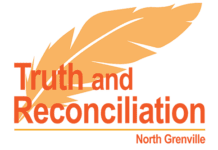

September 30 has been designated as National Day for Truth and Reconciliation, and Canada has issued a special design to mark the occasion. It contains three illustrations: an eagle representing First Nations, a narwhal representing Inuit, and a violin representing Métis. These illustrations are placed around the sun and surrounded by multicoloured smoke that represents Indigenous traditions, spirituality, inclusion and diversity.
Next Saturday, September 30, is the National Day for Truth and Reconciliation, and the main emphasis will be, as it ought to be, on the issue of Indian Residential Schools and their legacy. Every Child really does Matter, but there is a need for a wider perspective on Indigenous history and what Canadians need to know about it. There is a fairly widespread attitude in the country that Indigenous people “get everything for nothing”, that there is, somehow, an unfair advantage that they have over the rest of Canada. There’s no real grounds for that belief, it’s just there. And it could not be more unfair and untrue.
Canadians like to think that they’re basically decent people, wanting justice and fair play for all. I think that if most Canadians knew more about Indigenous history and their current status under the law, there would be widespread outrage, just as there was when the question of Residential School cemeteries became a public concern a couple of years ago.
You may have heard something on the news last week about a court case in Thunder Bay where Indigenous communities in the Robinson Superior Treaty area were looking for billions of dollars in compensation from the Canadian Government. That might seem to confirm the idea that they always “have their hands out”. But again, the facts are generally unknown to the wider public. Think of the area covered by the two Robinson treaties of 1850: all the land north of lakes Huron and Superior, almost as far as Hudson’s Bay. Now, think of the value of the trees, fish, gold, copper, uranium and other natural resources that have been taken from that territory since 1850. Think also of the value of Sudbury, North Bay, Sault Ste. Marie, Thunder Bay, and all the towns and factories included in the region. What is the overall value of that? What do the Indigenous people get in return for “surrendering” that land in 1850. I shall tell you: each and every man, woman and child living under that treaty get the princely sum of $4 per year.
The litigation in Thunder Bay, following similar court action in the Robinson Huron treaty area, is to recover what was promised, but never fulfilled, in those treaties over 170 years. When they signed the treaties, the Indigenous communities believed they would be sharing the wealth with the Canadian government. Instead, they were denied commercial licenses to compete with non-Indigenous companies in exploiting natural resources. Licenses to cut timber on their lands were given to others, and residents on reserves were denied the right to cut wood on their own reserve lands to sell in order to feed their children.
Indigenous communities were, for many years, legally confined to reserves, and not permitted to leave without the permission of the Indian Agent. When they tried to go to court, the Indian Act was amended to make it illegal for them to hire lawyers to plead their case. They were not allowed to write to the government to seek redress; all communication had to go through the Agent, who was often the one denying them their rights.
But it is not just in the past that injustice is found. Communities have the right to submit claims against the Crown for past grievances; but it is the Crown which decides whether the claim is accepted; it is the Crown which decides the rules under which claims are researched, presented, judged, and settled. It is, to a very large extent, a farce, a sham, window dressing to make it look like the Crown cares and is serious about settling historical grievances.
As someone who has worked with and for Indigenous communities in this field for more than 30 years, I can tell you with confidence that the rules are stacked against claimants, and that the Crown changes the rules whenever we can find a way through them. Year after year, government officials attend conferences and make the same speeches they made the previous year, promising the same new transparent and open relationship. But nothing really changes. A draft Agreement was reached recently between Ontario, Canada, and the 21 communities in the Robinson Huron Treaty area regarding that compensation I mentioned earlier. Big announcements were made, although neither the provincial nor the federal government have yet to approve the proposed deal. And, right after making a big public relations pitch about this great deal, the Ontario Government appealed it to the Supreme Court!
Canadians are concerned and involved in many human rights issues around the world. They campaign against climate change, the housing crisis, and prejudice of all kinds. But right under their noses is an injustice that has been going on unceasingly for generations, and they know little or nothing about it. I believe that, if they did, they would be angry and ashamed of how their governments have treated other residents of this land. Surely, we need to educate ourselves on how Indigenous peoples have been treated here. Maybe we can stand on guard for them too.







